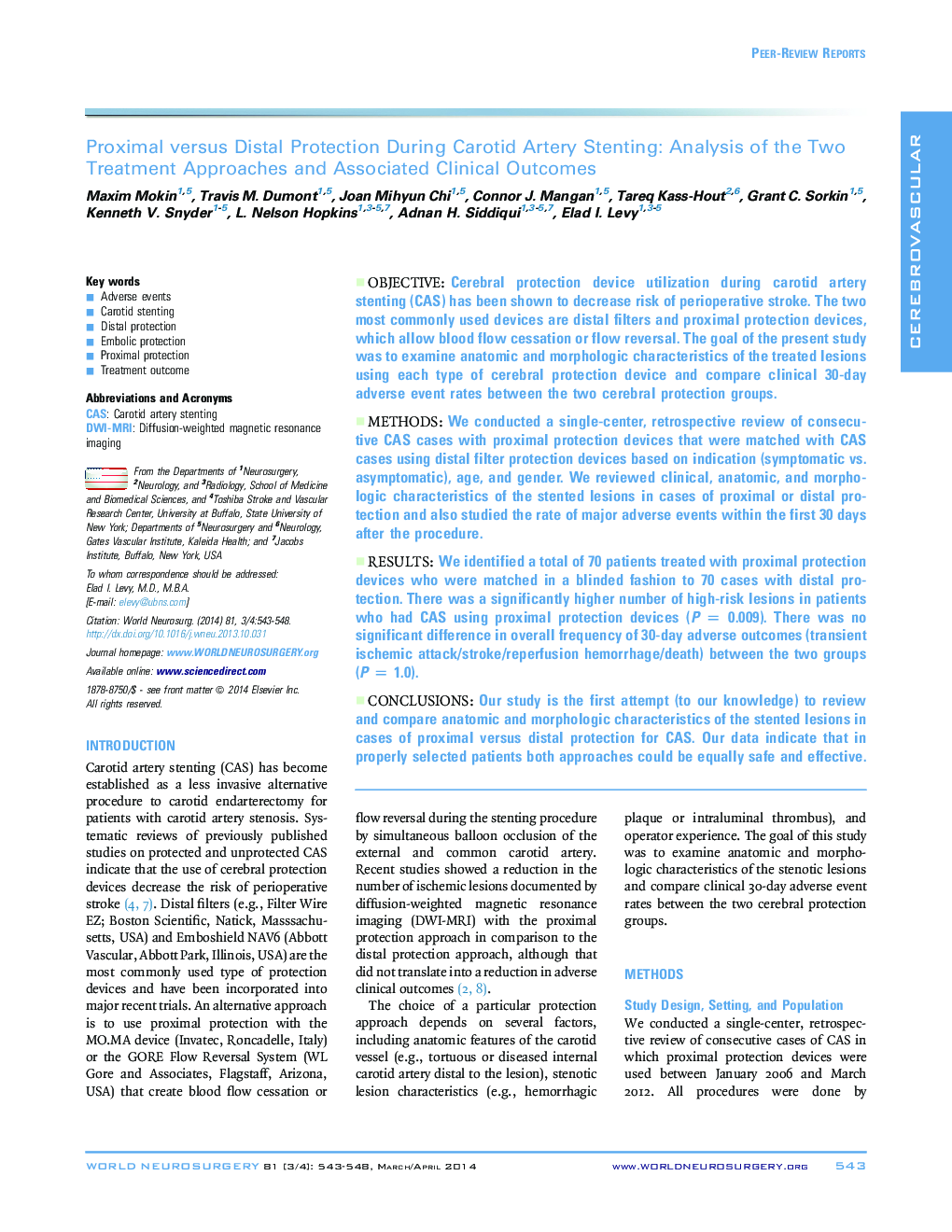| Article ID | Journal | Published Year | Pages | File Type |
|---|---|---|---|---|
| 3095230 | World Neurosurgery | 2014 | 6 Pages |
ObjectiveCerebral protection device utilization during carotid artery stenting (CAS) has been shown to decrease risk of perioperative stroke. The two most commonly used devices are distal filters and proximal protection devices, which allow blood flow cessation or flow reversal. The goal of the present study was to examine anatomic and morphologic characteristics of the treated lesions using each type of cerebral protection device and compare clinical 30-day adverse event rates between the two cerebral protection groups.MethodsWe conducted a single-center, retrospective review of consecutive CAS cases with proximal protection devices that were matched with CAS cases using distal filter protection devices based on indication (symptomatic vs. asymptomatic), age, and gender. We reviewed clinical, anatomic, and morphologic characteristics of the stented lesions in cases of proximal or distal protection and also studied the rate of major adverse events within the first 30 days after the procedure.ResultsWe identified a total of 70 patients treated with proximal protection devices who were matched in a blinded fashion to 70 cases with distal protection. There was a significantly higher number of high-risk lesions in patients who had CAS using proximal protection devices (P = 0.009). There was no significant difference in overall frequency of 30-day adverse outcomes (transient ischemic attack/stroke/reperfusion hemorrhage/death) between the two groups (P = 1.0).ConclusionsOur study is the first attempt (to our knowledge) to review and compare anatomic and morphologic characteristics of the stented lesions in cases of proximal versus distal protection for CAS. Our data indicate that in properly selected patients both approaches could be equally safe and effective.
